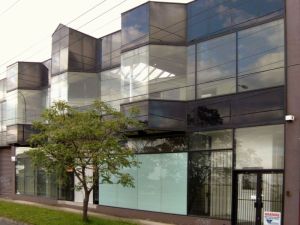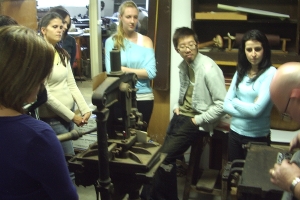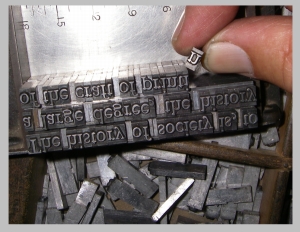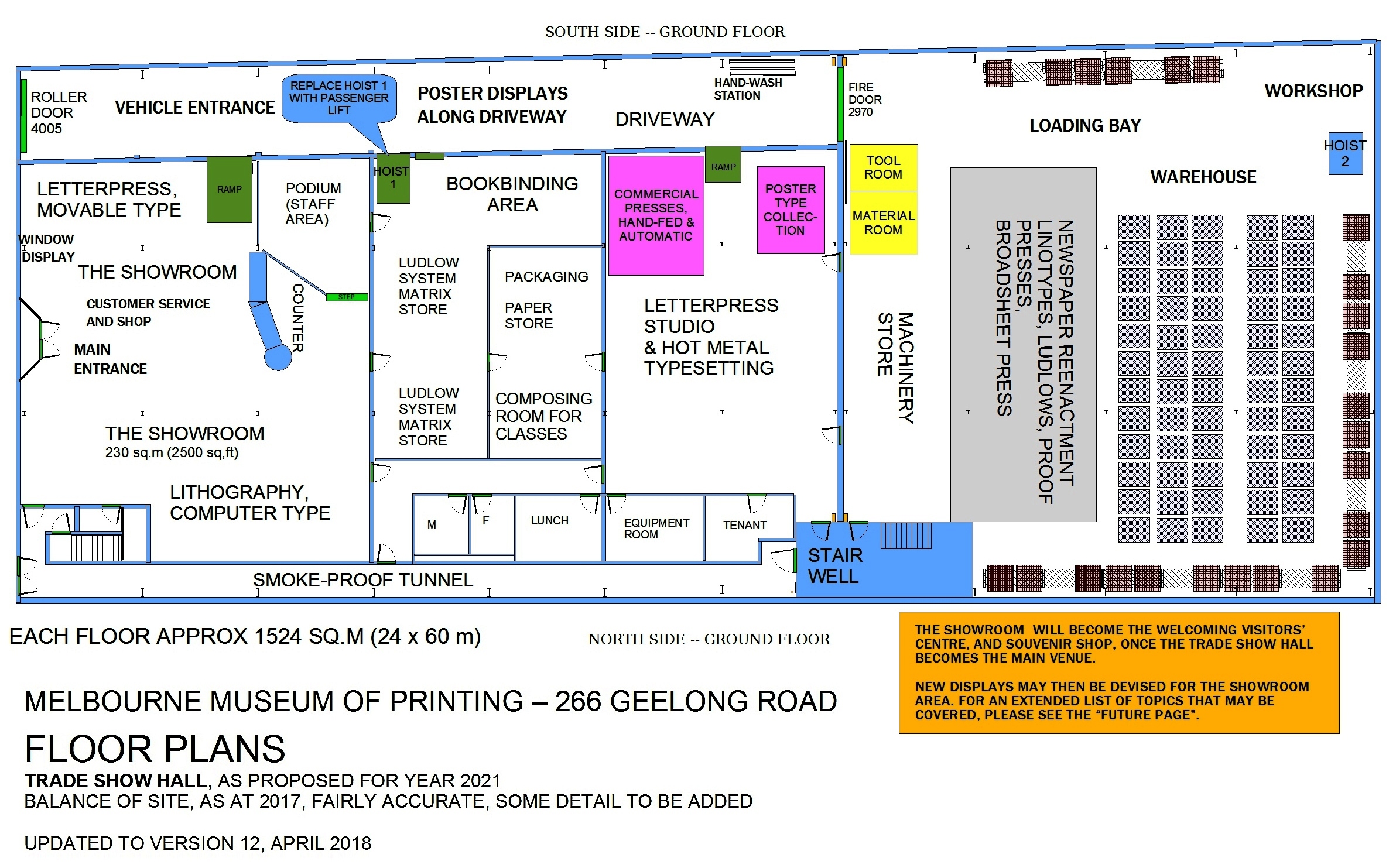What is M.M.O.P.?
MMOP is a substantial museum, a working museum, dealing with the history of printing: its craft, its business, its techniques and its related industries. MMOP is located in the inner suburban area of Greater Melbourne in Australia. The collection covers the older methods of typesetting and printing and the newer methods that started around 1960 and became paramount about 1980. In time it will cover newer methods again.
The collection is not just machines . . . there is the vast archive of documents, typesettings and engravings detailing the day-to-day work of the ordinary printer, the unique Library of Books as Artefacts and much more. The working typefoundry supplies fonts of metal type to meet the needs of this Museum, other museums, universities and the many who have taken enthusiastically to craft printing.
In the world of printing museums, there are perhaps 40 large and comprehensive institutions. It is thought that, fully developed, MMOP would be counted among them.
The main activity is presenting to various audiences the ancient crafts, developed from 1450, that made it possible for knowledge to spread far wider and more rapidly than it ever had before. Chief among the various audiences are practitioners who use computers for writing and designing their regular work. They benefit from one or two days planning, typesetting and printing without a computer in sight. Historians, librarians, researchers, engineers, all benefit from exposure to this ancient knowledge.

See detailed floorplan below

SO, WHY DOES MMOP HAVE A PROBLEM?

MMOP has always tried to depend solely on volunteers: its backers could cover the rent but not offer enough to cover any wages. In recent years it has become obvious that some paid staff are essential in a large museum. Without them, it is hard to keep the volunteers motivated and consequently there are never enough regular volunteers. Running the programs efficiently is a challenge, and many volunteers tend to lose interest . . . the museum is now more-or-less "dormant": still working but not getting enough participants to be sustainable.
Unfortunately, MMOP seems to be the only museum of printing that has to pay commercial rent and cover it from takings. Along with having no budget for staffing, this has made stable operation a distant dream.
And of course, an important collection needs to own its own building, so that no matter what happens, the priceless machines, artefacts and documents are not in jeopardy if revenues fail. The present building is offered to MMOP for a fair price and it would be great to find some way towards buying it before the owner sells it to someone else. The proposed MMOP Foundation Inc would be the owner.
The plan now (whether buying the building or not) is to convert MMOP to a professional organisation with a small team of full-time staff. Within a few years it will have sufficient activity to cover all expenses.
MMOP will become one of the world's leading museums in its field. It offers support to other Australian printing collections and will undertake useful research as well as improving its range of community and educational offers. For example its proposed Grade 6 program will reach most young people as they pass through their education, so they will at least understand what that there is a printing industry - it's not just a mouse-click!
That plan will require significant funding to cover fixed expenses for up to five years in decreasing steps. In that time, the staff and volunteers will get it running well, paying its way. MMOP will be jumping, 7 days!
If it is necessary to borrow for these initial fixed expenses, it is very likely that the present and proposed activities will produce enough cash flow to service all loan obligations.
WHAT CAN I DO TO HELP?
Please consider attending a workshop. Learn an ancient craft. Produce some great art in the studio. Encourage schools and colleges to bring their classes. How about networking with people you know who could offer some serious help? Get them to visit and see it first-hand.
[ A D V E R T I S E M E N T ]
A FULL DAY WITH TRADITIONAL PRINTING

The Roots of Printing is the eight-hour intensive workshop, intended for professionals working in Design, Printing, Publishing, Writing, Advertising, History, or teaching in those fields. Other artistically-minded and inquisitive people have also enjoyed it.
The ROP is also valuable for those who have gained an enthusiasm for printing by letterpress and wish to learn how to handle type and compose lines, paragraphs and complete pages. See the simplicity of assembling text without a computer!
Participants learn the ancient craft of typesetting. Explore the traditional rules of text assembly including type sizes (point, pica, em, en), leading, kerning and justifying and the linkages from those traditions into today's software. One aim is to help visualise what the software is doing. With metal types, it is all so visible. Then they go on to assemble a complex page of large and small type, and print copies of it on a hand-operated press!
When an individual holds a book or paper printed before the advent of computers, it is inspiring to visualise just what was involved in putting those letters, columns and pages together, letter-by-letter. This hands-on workshop shows the participant how metal type is set by hand and by machine; how spacing is controlled, both within the line and between lines; how type matter is arranged within the chase.
FOR MORE ON THE WORKSHOPS AND STUDIO, PLEASE SEE THE ROOTS OF PRINTING PAGE. (link is below)


